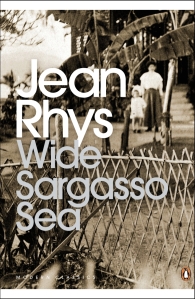When we first launched Something Rhymed, a year ago now, concerned well-wishers expressed scepticism about whether we’d discover twelve pairs of historic female writer friends to profile each month over the course of 2014.
Thanks to our close-knit community of readers from around the globe, the reverse has in fact been true. You’ve helped us to unearth many more female collaborations than we could possibly have envisaged at the beginning of the year. With such a treasure trove of hidden friendships still to explore, we intend to keep sharing our findings here in 2015.

The collaborations we’ve explored so far were sometimes illicit, scandalous and volatile; sometimes supportive, radical or inspiring. And so, we’ve increasingly found ourselves asking why they have been consigned to the shadows.
To mark the end of Something Rhymed’s first year, here are our top ten ideas on why the friendships between some of our most famous female writers still have a cloak of secrecy about them:
- Women writing in the past had more opportunities to converse in the parlour than in the pages of literary magazines.
- For reasons of propriety, for example, Harriet Beecher Stowe felt that she could not write an obituary in the Atlantic for her long-time friend and confidante, George Eliot.
- The marked harmony and lifelong endurance of many of these writing partnerships cost them copy.
- Charlotte Brontë and Elizabeth Gaskell bonded over their shared experience of infamy since they had both become mired in scandal for daring to pen biting social criticism. However, this enduring friendship often gets written off as a mere acquaintanceship. Could marked harmony also account for why so few of us have heard about the unlikely friendship between Ruth Rendell and Jeanette Winterson?
- Friendships between women are often neglected in favour of a female author’s intense or turbulent relationships with men.
- On January 1st we will reveal an intimate friendship that fits into this category…
- The literary status of some of our writer heroines has suffered because their genre, style or subject matter was particularly associated with women.
- This is certainly true of Nora Lefurgey, the diarist, and L. M. Montgomery, the children’s writer.
- Some of the pairs shared an alliance so radical that others refused to believe that it could possibly have thrived.
- The friendship between Zora Neale Hurston and Marjorie Kinnan Rawlings bravely transgressed racial divides, and Jane Austen and Anne Sharp defied the barriers between servant and employer.
- Other collaborations challenged core mythologies about female authors: the well-bred lady; the solitary eccentric; and the suffering genius.
- The alliance between Emily Dickinson and Helen Hunt Jackson challenges the mythology of the poet as a crazed recluse, and the support Jean Rhys received from Diana Athill complicates her image as a suffering genius.
- Popular perceptions of female friendship still struggle to allow for the kind of rivalry embraced by some of our writer forebears.
- Katherine Mansfield and Virginia Woolf, our first profiled pair, are a great example of this.
- Rumours of lesbian affairs sometimes actually seem easier for commentators to accommodate than the possibility of an intellectual partnership between women.
- Vera Brittain and Winifred Holtby knew all about this.
- Close friendships between girls might be all well and good but, after marriage, women have traditionally been expected to devote themselves primarily to their husband and offspring.
- For this reason, Maxine Kumin and Anne Sexton kept their friendship intensely private for many years.
- Historically, female collaboration was considered subversive and therefore taboo.
- And yet, the subversive nature of these friendships between women makes them powerful sources of transformation: Maya Angelou’s Nobel party for Toni Morrison, for instance, both celebrated the achievements of a fellow African American author and challenged their government’s failure to do so itself.
Working together on Something Rhymed this year, we have experienced some of the most jubilant moments in our own friendship (as well as some of the most fraught!). But, from Eliot and Stowe – who taught us the importance of candour – to Mansfield and Woolf – who showed us that rivalry can be a positive force – we are learning how to keep our own collaboration on course. And, with your support, we will continue to celebrate the secret sisterhood between our trailblazing forebears, finally bringing it centre stage.







